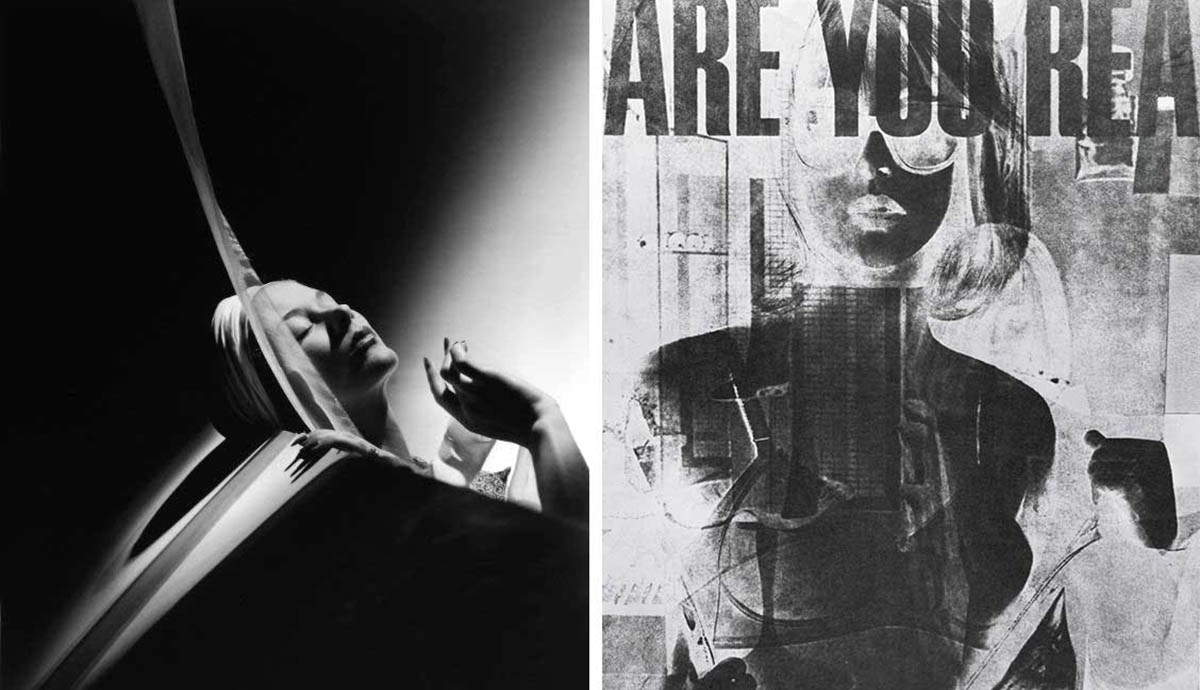
Horst P. Horst was a German born, American photographer during the 20th century. He is best known for his work as a fashion photographer with industry giants like Vogue and Chanel. Horst also captured portraits of many influential figures throughout his career.
Horst P. Horst is a notable figure in photography due to his distinct, striking, mysterious and alluring images that brought the avant-garde into the forefront mainstream consumption.
The early years behind the camera

Horst P. Horst, originally Horst Paul Albert Bohrmann, was born in Weibenfels-an-der-Saale, Germany in 1906. His father was a well-off merchant so Horst lived a normal, relatively comfortable life. When he was a teenager, he met a dancer named Eva Weidemann whose artistic nature sparked his interest in the avant-garde. This introduced him to the excitement of the art world.
For a short period, Horst studied architecture in Paris under the renowned Le Corbusier. He dropped out after networking with many people in the Parisian art scene. In 1930, he met Vogue photographer Baron George Hoyningen-Huene and Horst’s life changed forever. He was introduced to the world of high fashion photography.
In 1932, Horst had an exhibition at La Plume d’Or in Paris. After Janet Flanner of The New Yorker gave the show a brilliant review, Horst became a prominent name in photography.
Involvement with Vogue, Chanel and other icons

Horst became Huene’s photographic assistant. Horst received instruction and mentorship under Huene while their relationship grew closer. The pair traveled to England that year and it was there that Horst met another photographer, Cecil Beaton who was working with Vogue UK.
After this encounter, Horst began working with Vogue in 1931. His first advertisement was a full page spread of a model wearing black velvet, selling a Klytia perfume bottle.
Horst also met Coco Chanel in 1937 while residing in New York City. They would collaborate for decades, capturing classic images of the iconic Chanel brand as well as portraits for the leading woman herself.

Horst’s Palatable, Avant-Garde Style

Horst P. Horst’s photographic style is distinctive. The New York Times once described this style by saying, “Horst tamed the avant-garde to serve fashion” and that encompasses his work well. Horst utilized avant-garde flourishes in a way that was palatable and even more so, enticing for the greater public.
Instead of just exploiting flashy colors like many other advertisements, Horst wanted his work to maintain a high level of class and value. He often shot in black and white with great detail given to the lighting. He often lit the subject directly and allowed for no background shadows. Even when shooting in color, he utilized a mainly monochromatic color palate for each set.

It’s hard to look away from the sometimes erotic, sensual glamour of his work. This made him the prime photographer for fashion brands. By drawing consumers into the image while also maintaining this high level of sophistication, his skill was everything that brands dream to find.
Artistically, his photographic style ranges from Surrealism to Romanticism, often combining the two.
His most famous work and immigration

Horst’s iconic image is The Mainboucher Corset. It depicts a woman sitting with an untied corset. She is adjusting herself outside of the camera’s view. Her body is gently off center with a gentle sway, which adds to the mysterious nature of the image. It feels as though the viewer has stumbled into a private moment. It is unclear if the subject is taking her corset off or putting it on. and this has enticed viewers ever since.
After capturing this image, Horst moved to The United States and became a citizen. This is when he formally changed his birth name to his known monicker, Horst P. Horst. He changed his name to avoid being confused with Nazi Martin Bormanm. After this, he was commonly referred to as simply, Horst.
Photographer for the rich and powerful

Throughout Horst’s entire career, he had the chance to capture celebrities and other important figures. A year after beginning work with Vogue, he had the opportunity to photograph Bette Davis. Soon after this, he photographed Yvonne Printemps, Eve Curie, Duke Fulco di Verdura, Princess Natalia Pavlovna and Princess Marina of Greece and Denmark to name just a few.
Later on in his life, Horst began a series of photographs which captured high society and included commentary from his partner, Valentine Lawford. The series focused on the subjects’ lifestyles and their international wealth and power. Some of these subjects included Andy Warhol, Jacqueline Kennedy, The Duke and Duchess of Windsor, Consuelo Vanderbilt and Gloria Guiness, again, just to name a few of the powerful subjects.

Presidential photographer

After receiving his United States citizenship, Horst joined the army and became an army photographer. His work was often printed in the army’s magazine titled Belvoir Castle.
Horst then photographed President Harry S. Truman in 1945. They became friends and subsequently, Horst photographed every post-war period First Lady, by presidential invitation.
Works on the market
Even though photographs can be reproduced, they can still be extremely valuable on the market. This article here explains what aspects add or detract from a photograph’s value.
Horst P. Horst’s works can sell for a considerable amount given his historical importance and also visual appeal.
A print of Mainboucher Corset sold for £20,000 at Christies in London during a November 2017 auction. Back in 2008, another impression sold for $133,000 in New York.
Another famous photograph, Around the Clock (1987) sold for $25,000 Euro most recently in June 2019 in Paris.
Horst P. Horst’s iconic images and striking advertisements continue to capture viewers and, in turn, sell for high values on the market. They are a solid choice for collectors since often the photographer as well as his subject matter are historically important and of interest.
For other related articles on Photographers, click here.










